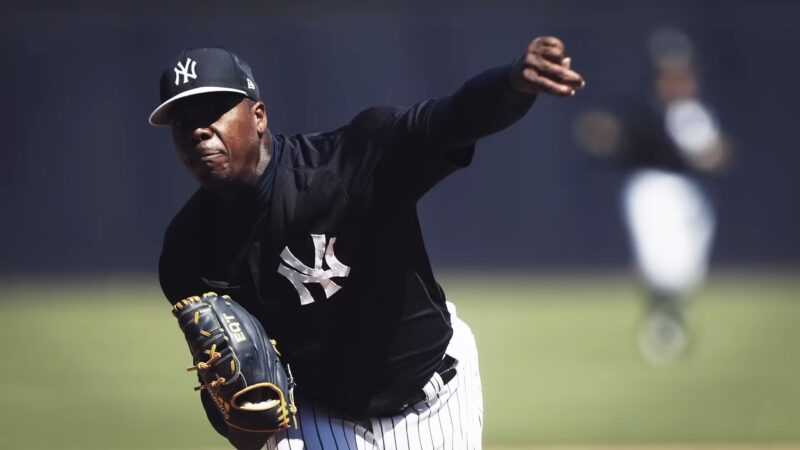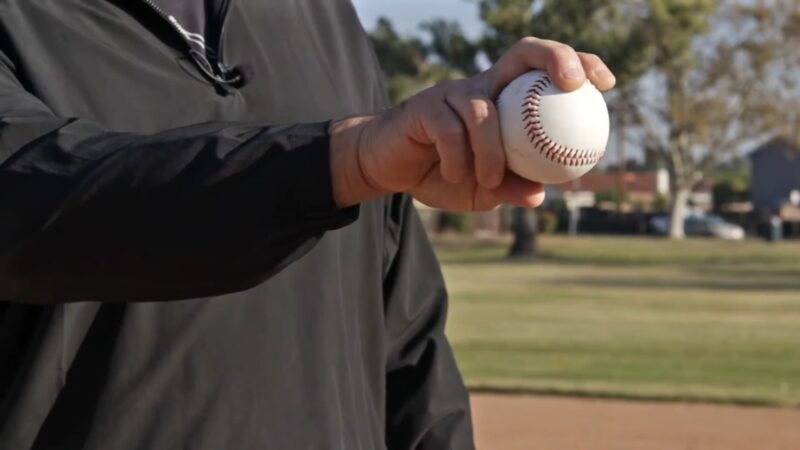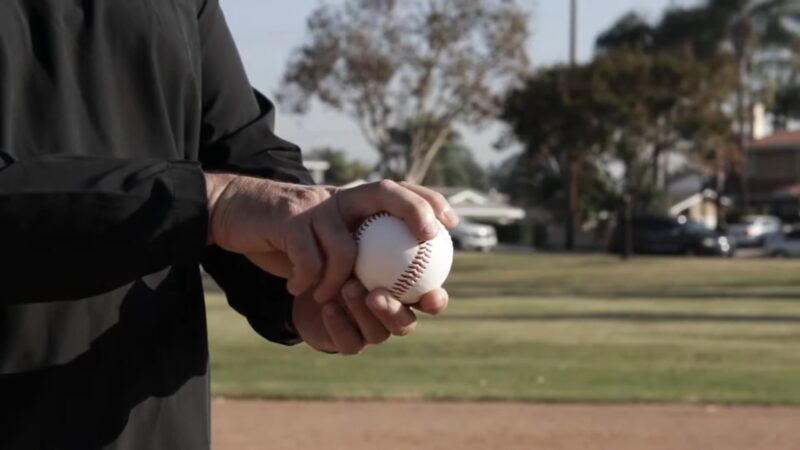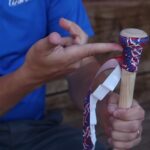Baseball, a game rich in strategy and skill, hinges not just on the bat’s swing but equally on the pitch’s throw. Among the arsenal at a pitcher’s disposal, the fastball reigns supreme for its velocity and power. Yet, within this category, nuances emerge, distinguishing the 4-seam from the 2-seam fastball.
Both pitches serve critical roles, shaping the game’s dynamics and challenging batters and pitchers alike. Today we’ll explore these fastballs, their mechanics, effects, and strategic uses, making the complexities of pitching accessible to all.
Key Takeaways
- The 4-seam Fastball is gripped across the seams for a straighter flight, while the 2-seam Fastball is gripped along the seams, resulting in movement due to air resistance and spin.
- The 4-seam Fastball is faster and has a straight trajectory, making it harder to hit. The 2 Seam Fastball sacrifices some speed for movement, making it unpredictable and effective for inducing ground balls.
- Pitchers use the 4 Seam Fastball for strikeouts and in high-pressure situations. The 2 Seam Fastball is preferred for its ground ball-inducing ability and is effective against batters who struggle with moving pitches.
The Basics of the Fastball
What is a Fastball?

A fastball is a type of pitch thrown by a baseball pitcher, characterized by its high speed. It’s the most fundamental and frequently used pitch in baseball, serving as the cornerstone of a pitcher’s arsenal. The primary goal of a fastball is to challenge the batter with sheer velocity, making it harder to hit due to the limited reaction time.
Fastballs are not just about speed; they’re also about establishing control and setting the tone for the pitcher’s repertoire of pitches.
Importance for Pitchers
For pitchers, mastering the fastball is crucial. It’s often the first pitch a pitcher learns and becomes the most reliable tool in their kit. A well-executed fastball can overpower batters, but it also sets up the effectiveness of other pitches, such as curveballs and sliders, by creating a speed differential.
The fastball’s simplicity in concept belies its strategic depth, making it a pitch that requires continuous refinement and control.
The 4 Seam Fastball
Grip and Mechanics

The 4 seam fastball is named for the way the pitcher’s fingers grip the ball, with the fingertips resting on the seams to create four seams spinning toward the batter. This grip ensures the least air resistance during flight, contributing to its straight trajectory.
The pitcher grips the ball with the index and middle fingers spaced apart across the seams, with the thumb underneath for stability. The release involves a forward wrist snap, maximizing the velocity as the ball leaves the hand.
Flight Path and Speed
The 4-seam fastball is known for its straight, high-speed trajectory. It’s the fastest pitch in a pitcher’s arsenal, often reaching speeds upwards of 90-100 mph in professional baseball. The speed, combined with the straight flight path, makes it a challenge for batters to hit, especially when accurately placed in the strike zone.
Strategic Use and Advantages
Pitchers use the 4 seam fastball to establish dominance early in the count, often using it for the first pitch to challenge hitters. Its speed makes it an excellent choice for strikeouts or inducing weak contact when the pitcher needs a defensive play.
The 4 seam’s predictability and control also make it a safe option in critical game moments.
The 2-seam fastball
Grip and Mechanics

The 2 seam fastball’s grip involves the pitcher’s fingers running along two of the ball’s seams, creating a different axis of rotation compared to the 4 seam. This grip causes the ball to experience more air resistance and results in movement as it approaches the plate.
The index and middle fingers are closer together, lying along the seams, which encourages the ball to tail away from or into a batter, depending on the pitcher’s arm side.
Flight Path and Movement
Unlike the 4-seam fastball, the 2-seam fastball introduces an element of movement, making it less predictable. As it nears home plate, the ball can sink or tail, depending on the pitcher’s grip and release.
This movement makes the 2 seam fastball particularly effective against ground ball hitters or when a pitcher seeks to induce a double play.
Strategic Use and Advantages
Pitchers often use the 2 seam fastball to generate ground balls and off-balance swings. It’s especially effective in situations where the pitcher needs to prevent the batter from getting under the ball, such as with runners on base.
The pitch’s movement can also exploit a batter’s weaknesses, particularly if they struggle with pitches that break away or into them.
Key Differences Between the 4-Seam and 2-Seam Fastball
| Feature | 4 Seam Fastball | 2 Seam Fastball |
| Grip and Release | Promotes a faster, straighter flight. | Induces movement due to different air resistance and spin. Requires slight pronation or wrist turn. |
| Speed and Movement | Typically travels faster and straighter. | Trades some velocity for movement (horizontal tail or sinking action), making it more unpredictable. |
| Strategic Applications | Used for strikeouts and high-pressure counts. | Preferred for inducing ground balls and managing contact. |
FAQs
Can a pitcher be equally good at throwing both a 4-seam and 2 2-seam fastball?
Yes, many pitchers train to be proficient in both to enhance their versatility on the mound. Having both pitches in their arsenal allows them to adapt to different batters and situations.
Do the 4 Seam and 2 Seam Fastballs require different physical conditioning?
While the basic conditioning for pitching is similar, pitchers might focus on different exercises to enhance grip strength, wrist flexibility, or arm stability depending on which pitch they want to improve.
How do batters typically adjust their strategy when facing a 4-seam vs. a 2 2-seam fastball?
Batters might stand differently or adjust their timing, anticipating the straighter, faster 4 Seam or preparing for the movement of the 2 Seam. Recognizing the pitcher’s grip can also influence their swing decisions.
Is there a type of catcher’s mitt that is preferred for catching these fastballs?
Catchers use a standard mitt for all types of pitches, but they might prefer mitts with extra padding for high-velocity pitches like the 4-Seam Fastball to protect their hands and improve pitch framing.
Do weather conditions affect the 4 Seam and 2 Seam Fastball differently?
Yes, conditions like humidity, temperature, and wind can influence the flight and movement of both pitches, sometimes making the 2 Seam’s movement more unpredictable or affecting the velocity of the 4 Seam.
Can a pitcher decide to switch between a 4-seam and 2-seam grip during a game based on performance?
Absolutely. Pitchers often adjust their strategy based on how well they’re controlling each pitch during a game, the batter’s performance, and game conditions. It’s not uncommon for a pitcher to lean more heavily on the pitch that feels more effective on any given day.
Summary
These pitches, while fundamentally similar, offer a range of strategic choices for pitchers, from the direct challenge of the 4-Seam’s speed to the deceptive movement of the 2-Seam. Mastering these differences not only elevates a pitcher’s game but also enriches our experience as fans and players.







